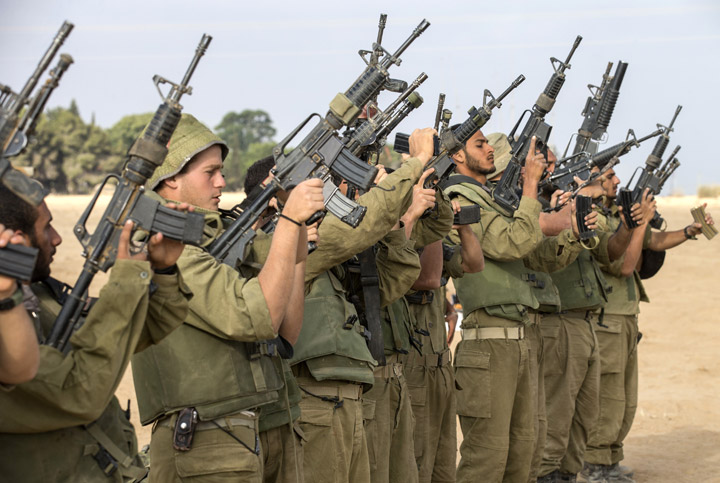TORONTO – Only one hour after a cease-fire began in Gaza, Hamas militants allegedly captured an Israeli soldier and pulled him into a tunnel, according to the Israel Defense Forces (IDF).

The development comes after reports emerged almost two weeks ago that another soldier was captured by Hamas in an attack on an IDF vehicle that left six other soldiers dead.
One soldier’s remains were not identified, and Israelis feared the worst — that he was captured, a possibility that the Associated Press described as a “nightmare scenario.”
The IDF later declared the soldier dead, but the incident harkened back to a nightmare from Israel’s past: the case of captured solider Gilad Shalit.
Shalit, a former IDF soldier, was abducted by Hamas militants in 2006. This raid, too, involved tunnels; the militants emerged from underground in Israel having tunneled from the Gaza Strip.
After a bloody attack on an Israeli military post, they pulled the injured Shalit, then only 19, back into the tunnel and disappeared. He would be a captive for more than five years.
READ MORE: Here’s why Israel says it wants to destroy Hamas tunnels
For three days, the world awaited Israel’s response. And when it came, it was severe – tanks rolled into Gaza as bombs hit infrastructure in the Strip. Israel arrested 64 Hamas MPs and officials.
The two sides also traded barbs in the press. Hamas called the arrests “blackmail,” and Israel countered that detainees were not “bargaining chips for the return of the soldier.”
An IDF spokesperson called the action “simply an operation against a terrorist organization.”
Over the next month, 100 Palestinians were killed along with an Israeli soldier. Israel would not negotiate for Shalit’s safe return until more than two years later when it began Egypt-brokered talks with the Palestinians.
READ MORE: What does Hamas demand to agree to a ceasefire with Israel?
The same year Shalit was captured, Lebanon’s Hezbollah captured two IDF soldiers and killed them, which led to a bloody war.
With little progress made at getting to Shalit using military means, Israel was beginning to crack on one important issue – freeing Palestinian prisoners.
While Israelis didn’t want to see the prisoners released, Shalit’s case galvanized the public.
Current Prime Minister Benjamin Netanyahu was initially hawkish. As opposition leader in 2007, he was quoted as saying, “The release of prisoners before the conference is not the path of peace, it is the path of terror,” regarding a proposed prisoner release then-Prime Minister Ehud Olmert was considering.
Ironically enough, Netanyahu would later accept very similar terms in securing the release of Shalit, trading 1,027 prisoners, many of them convicted of murder. But that deal wouldn’t come until October 2011, after a number of stalled attempts. (At least 50 of these released prisoners were later re-arrested last month during the hunt for three missing Israeli teens).
While the numbers seemed disproportionate (think back to this…

… the cover of The New York Times Magazine from Nov. 13, 2011), the deal wasn’t without precedent:
- 1983: Israel releases 66 prisoners, 4,500 detainees in exchange for six soldiers
- 1985: Israel releases 1,150 prisoners in exchange for eight soldiers
- 2004: Israel releases 436 detainees in exchange for one soldier
- 2008: Israel releases “notorious” Lebanese prisoner Samir Kuntar for the bodies of two soldiers captured and killed by Hezbollah in 2006
These past cases have demonstrated the immense power the Palestinians wield by holding just one Israeli captive. While the Palestinians are on the smaller side of an asymmetrical conflict, capturing a soldier has proven to be a game-changer in the past.
Regardless of whether Netanyahu decides to play this new development hawkishly or not, these past scenarios also show how deeply the Israeli public will be moved by the capture.




Comments